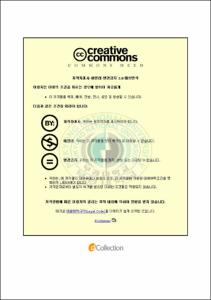면광원용 저온 소성형 형광체 paste 특성 연구
- Alternative Title
- A study on the characteristics of low temperature firing phosphor paste for flat light source
- Abstract
- BLU is a important part of the most representative LCD at flat panel display. In order to supplement the optical special quality which LCD cannot light itself, BLU is an essential property to supply with same brightness on the screen. The backlight takes the most importance of the panel's price. In addition, it consumes almost 90% of the power consumption at LCD panel. For the improvement of LCD's low power consumption, high-definition, and price competitiveness, the innovation of the backlight skill is the one of the most important issues. Therefore, I tried to manufacture the Flat light source BLU which utilizes the Field emission principles instead of CCFL lamp.
A phosphor paste used in Flat light source BLU the forms phosphor layer as doing the screen printing. Also, through the process which calls firing, the binder existed in paste are excluded. If the binder still existed after firing, the luminance and life of the a phosphor should be reduced. The binder resin used in phosphor paste is a Ethyl cellulose type. Thus, in order to do thermal decomposition completely, the 470℃ is needed. However, mixing a phosphor outbreaks a degradation when the temperature reaches 420℃. In addition, if the temperature reaches to the 470℃, the luminance should be reduced about 30%.
Therefore, the method for the protection of phosphor degradation is that we apply the paste which does firing completely in low temperature. As a result, if the binder resin in phosphor paste fired completely in low temperature, we can earn the improvement of the luminance and also manifest the phosphor peculiar light itself with 100%.
As manufacturing the low temperature firing paste applicable Flat light source for LCD BLU, this study examined the specific quality. For the phosphor pastes, the low temperature firing acryl resin is used as the binder resin. As the result of thermal decomposition characteristics, residual hydroxylcarbon rested under 0.1wt% on 400℃. With the manufactured paste in this study, the Flat light source device is manufactured through the screen printing and it brought the almost 100% of luminous efficiency about the phosphor luminance.
- Issued Date
- 2008
- Awarded Date
- 2008. 2
- Type
- Dissertation
- Publisher
- 부경대학교 대학원
- Alternative Author(s)
- Lee, Dong Wook
- Affiliation
- 부경대학교 대학원
- Department
- 대학원 인쇄공학과
- Advisor
- 남수용
- Table Of Contents
- 목 차 = ⅰ
List of Figures = ⅳ
List of Tables = ⅵ
Abstract = ⅶ
Ⅰ. 서론 = 1
Ⅱ. 이론적 배경 = 4
1. LCD와 BLU = 4
가. LCD = 4
나. BLU = 5
다. 면광원의 구조 = 9
2. 고분자의 분해 = 12
가. 분해 반응 = 12
나. 열가소성 아크릴 레진 = 13
3. 전이금속과 형광체 = 17
가. 전이금속 = 17
나. 형광체 = 18
4. 스크린 인쇄 = 19
가. 스크린 인쇄의 프로세스 = 20
나. 스크린 인쇄시 페이스트의 거동 = 22
다. 스크린 인쇄 프로세스의 적정화 = 23
Ⅲ. 실험 = 26
1. 재료 = 26
가. 바인더 레진 = 26
나. 형광체 = 28
다. 용제와 첨가제 = 29
2. 페이스트의 제조 = 30
가. 형광체 혼합 = 30
나. 형광체 페이스트의 제조 = 31
다. 중간막 페이스트의 제조 = 32
라. 형광막과 중간막 형성 = 34
마. 측 정 = 35
Ⅳ. 결과 및 고찰 = 36
1. 백색광의 구현과 색재현 영역 = 36
2. 형광체 페이스트용 바인더 레진 = 37
가. 형광체 페이스트용 바인더 레진의 열분해 특성 = 37
나. 소성 후 형광막의 표면과 휘도 = 40
3. 중간막 페이스트용 바인더 레진 = 43
가. 중간막 페이스트용 바인더 레진의 열분해 특성 = 43
나. 중간막의 단면과 Al 증착 후 표면 및 휘도 = 45
4. 형광막과 중간막 소성특성 = 46
5. 광반사막 형성 = 47
6. 휘도 측정 = 50
7. 형광체 페이스트의 레올로지 특성 = 52
Ⅴ. 결론 = 57
References = 59
- Degree
- Master
- Files in This Item:
-
-
Download
 면광원용 저온 소성형 형광체 paste 특성 연구.pdf
기타 데이터 / 8.06 MB / Adobe PDF
면광원용 저온 소성형 형광체 paste 특성 연구.pdf
기타 데이터 / 8.06 MB / Adobe PDF
-
Items in Repository are protected by copyright, with all rights reserved, unless otherwise indicated.